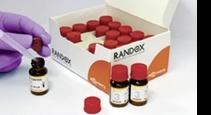Streamlining testing without loss of quality
As many laboratories face demands to turn around faster, more accurate patient test results against a backdrop of increasingly stringent quality control and tighter budgets, the search is on for tools to help meet ever-stretching targets.

Streamlining is the answer – and, for laboratories, products are available to help streamline without loss of precision and test results accuracy.
Randox Laboratories, a quality control provider, reports the development of multi-analyte quality controls, explaining: ‘Where previously large multifunctional laboratories may have had to routinely run thirty or more controls, it is now possible to produce highly accurate test results using ten or less controls, in formats suitable for a range of analysers.
‘For example, in routine clinical chemistry testing where laboratories are testing patient samples for as many as 100 biomarkers, including cardiac, lipids, proteins, therapeutic drugs and hormones, many laboratories may previously have had to run multiple, and often costly, single controls. However, if they switch to consolidated clinical chemistry controls labs can now carry out highly accurate quality control by, using just one quality control product.
‘Randox’s Liquid Assayed Chemistry Premium Plus control contains 100 analytes, all at clinically relevant concentrations and in line with internationally recommended cut off levels,’ the firm confirms. ‘In a handy liquid format and with open vial stability for seven days, laboratories are getting more for less, helping save time and money.’
Similarly, in immunoassay testing, the Randox Immunoassay Premium Plus control contains 52 analytes including fertility and thyroid hormones, tumour and cardiac markers, kidney function tests and vitamins, including Vitamin D.
Quality control in maternal screening is also simplified with consolidated controls, the company reports. ‘Whereas previously laboratories may have had to run three or more controls, accurate QC can now be achieved with one control, covering all six key parameters used during first and second trimester screening of Down’s Syndrome and Spina Bifida, including PAPP-A and Inhibin-A.’
Additionally, laboratories can combine the benefits of consolidated controls with the analytical power of a web-based inter-laboratory data management system, Randox adds. ‘This will help users to manage, interpret and compare QC data to potentially thousands of laboratories across the globe that are running the same test. If a laboratory is not using a peer group reporting package, they may not know they have a problem until the next cycle of proficiency testing, by which time many inaccurate patient results may have been reported.’
An inter-laboratory data management system could significantly help labs improve analytical performance, enabling them to identify trends, system errors or reagent issues as soon as they arise, the firm points out. ‘When used in conjunction with consolidated controls, laboratories have a powerful streamlining solution delivering highly accurate results quickly, saving labs time and money.’
29.07.2014











